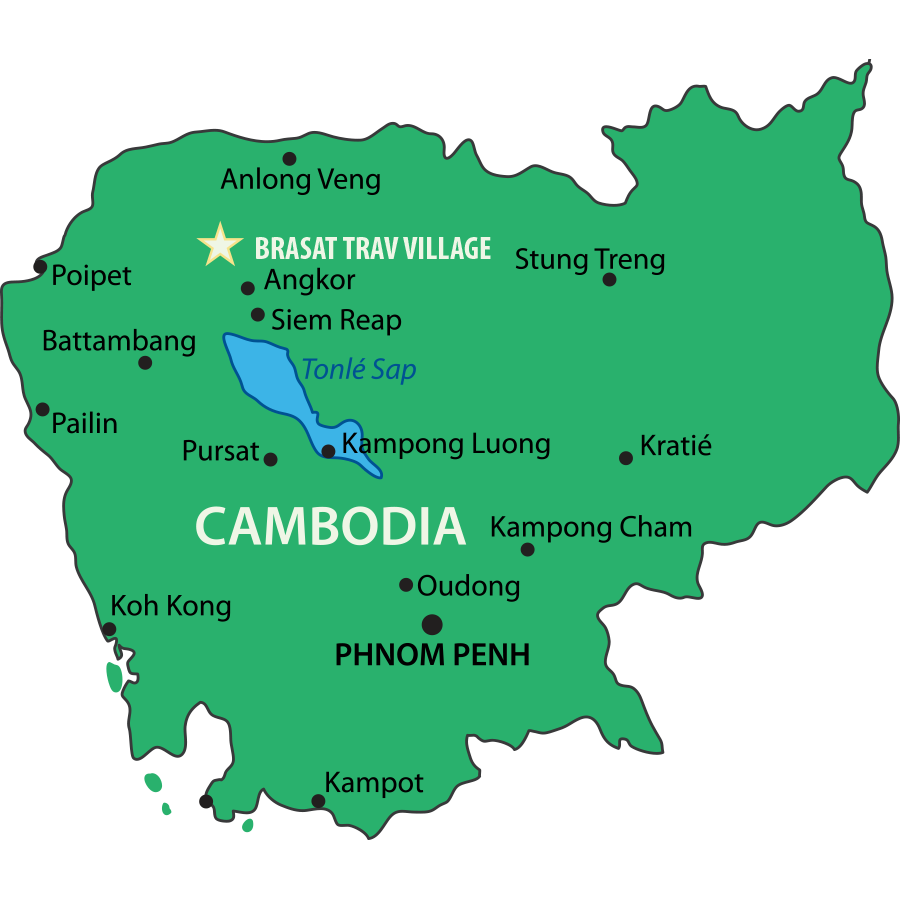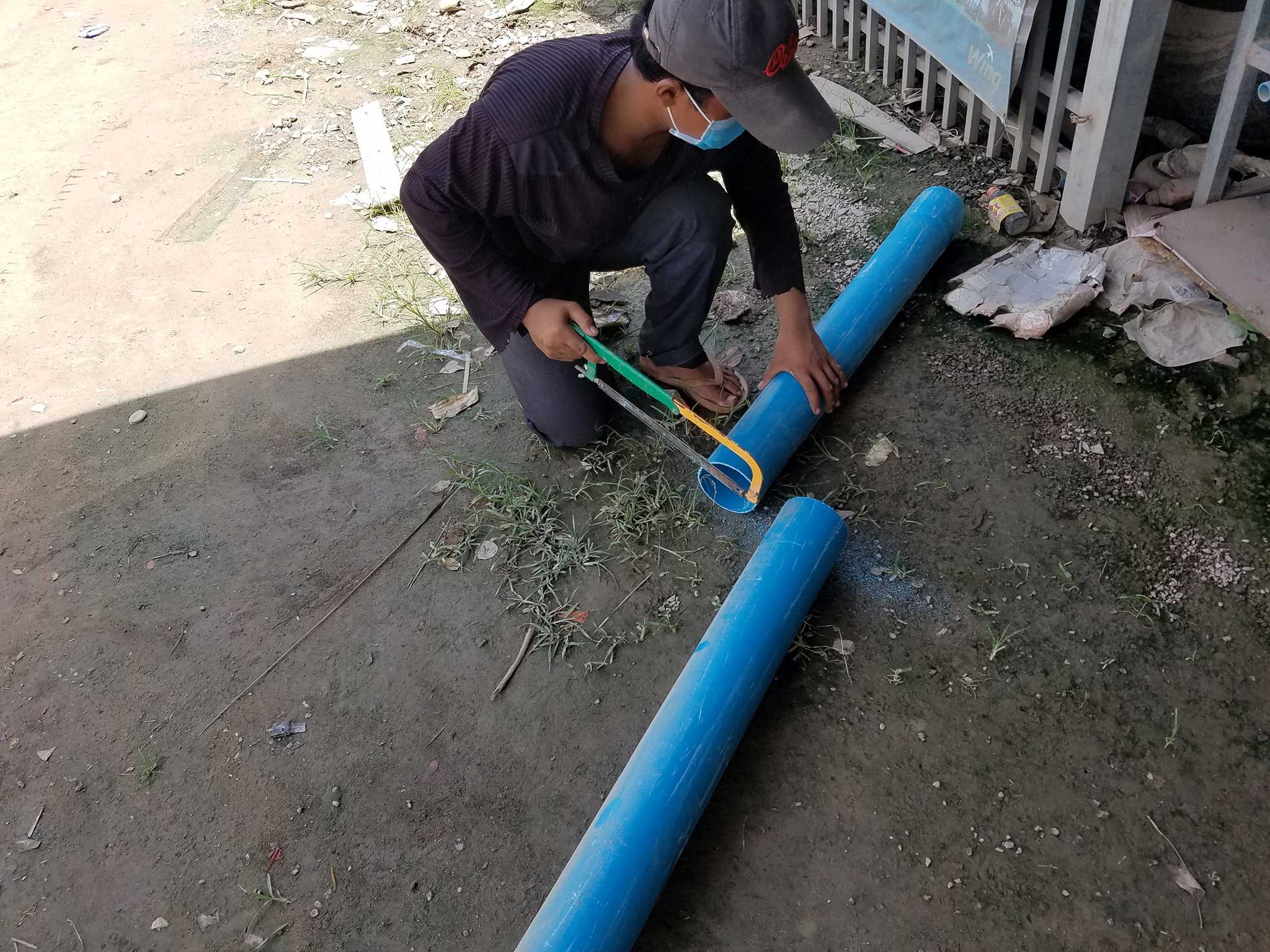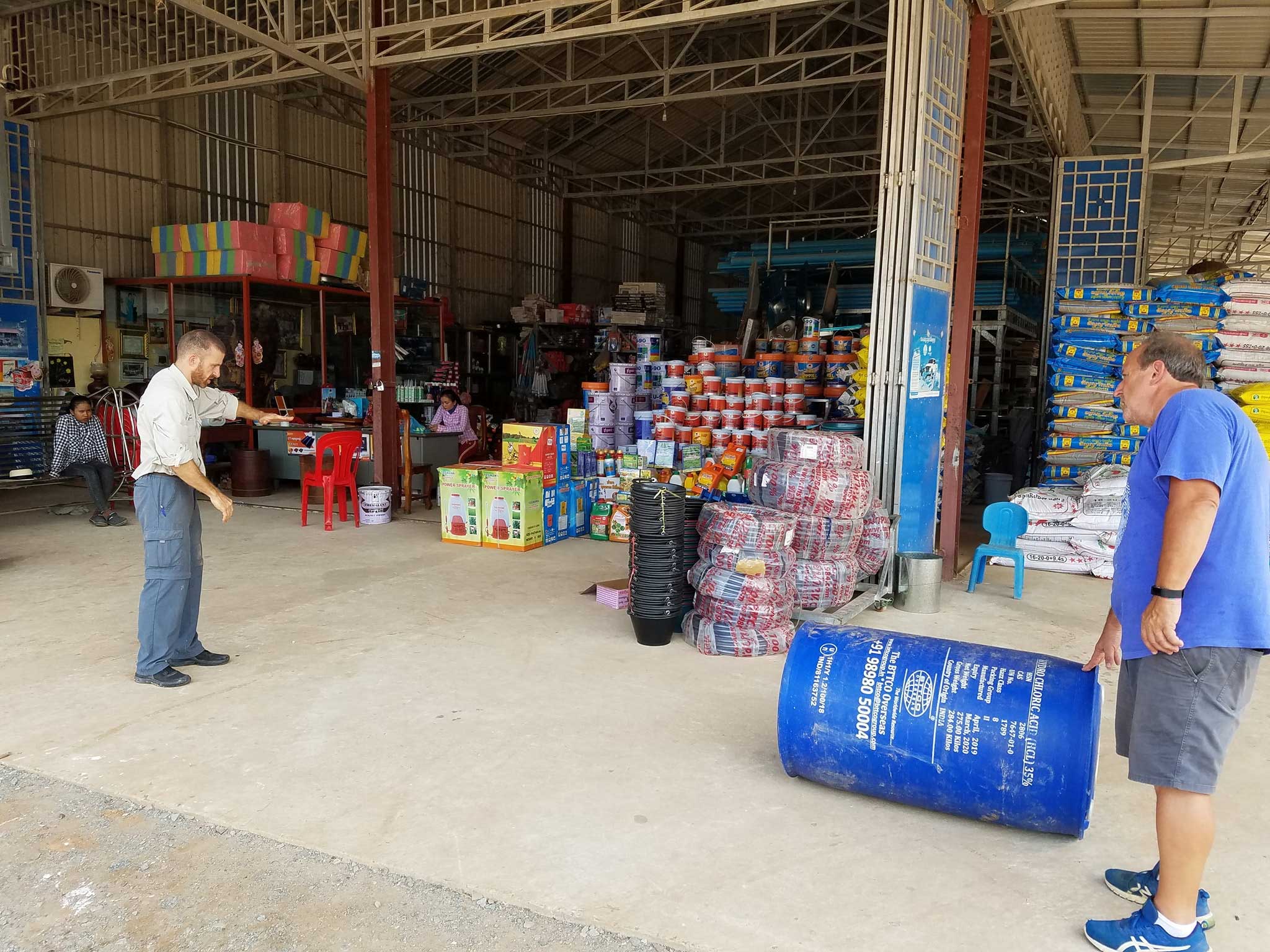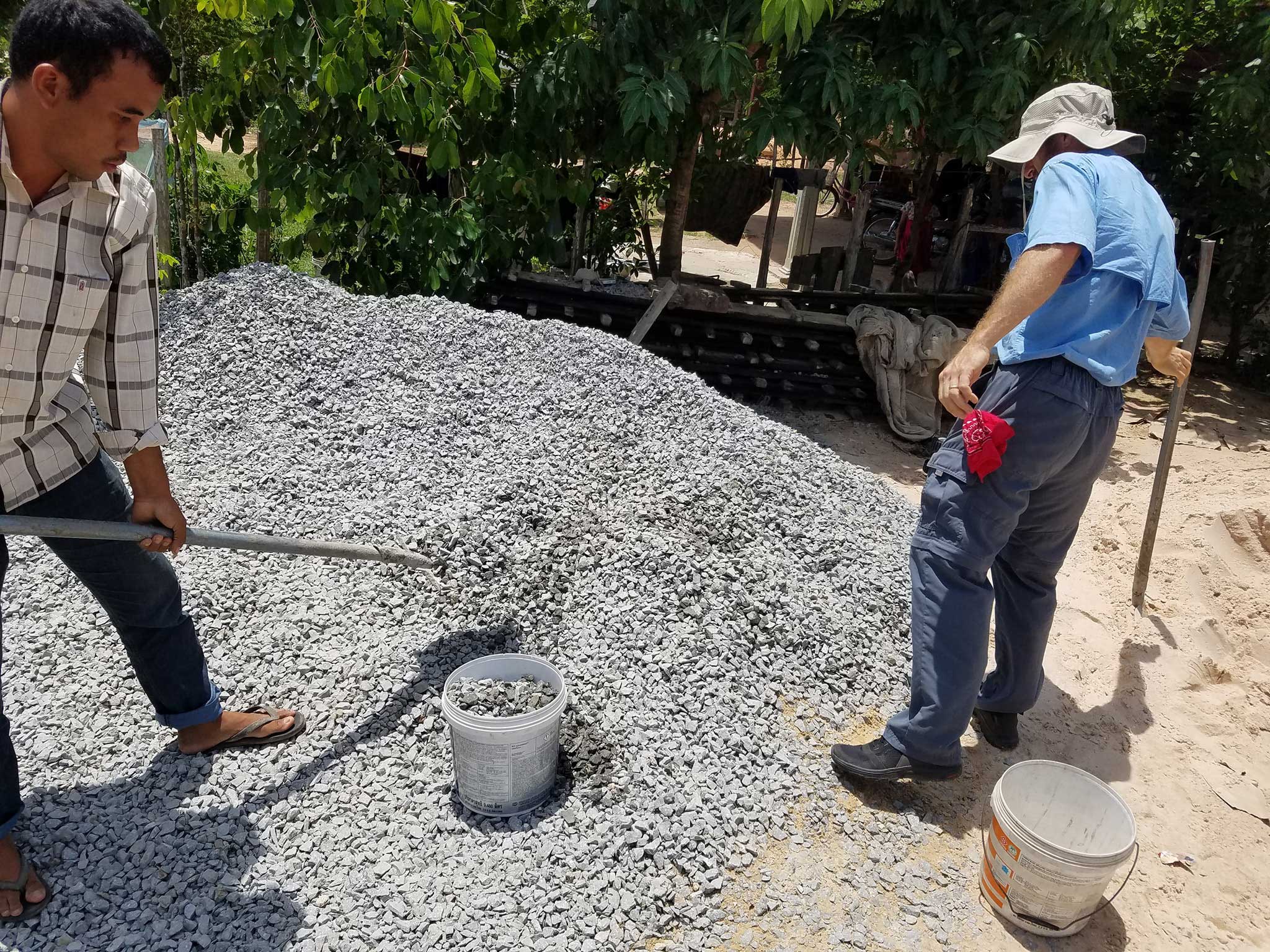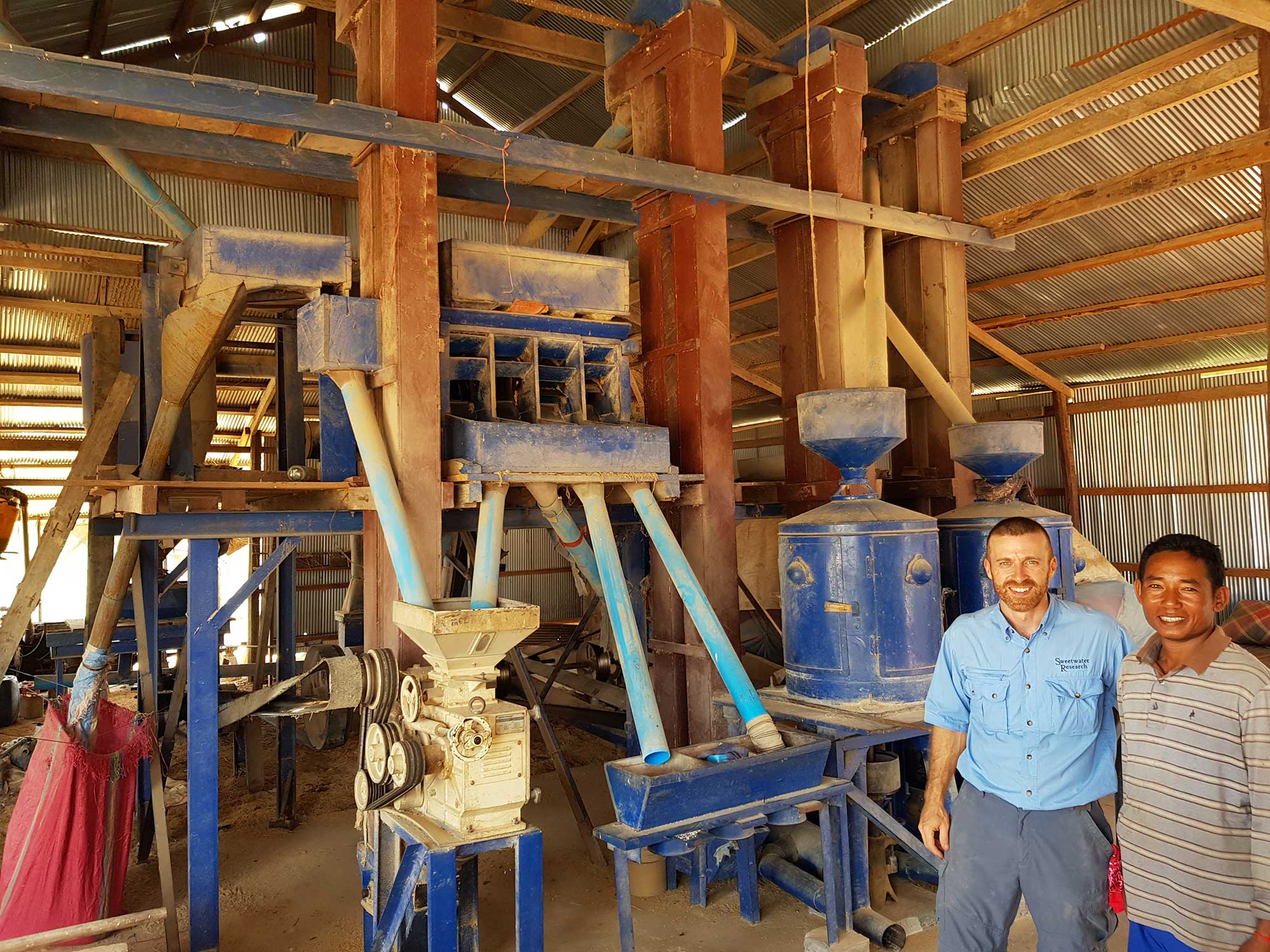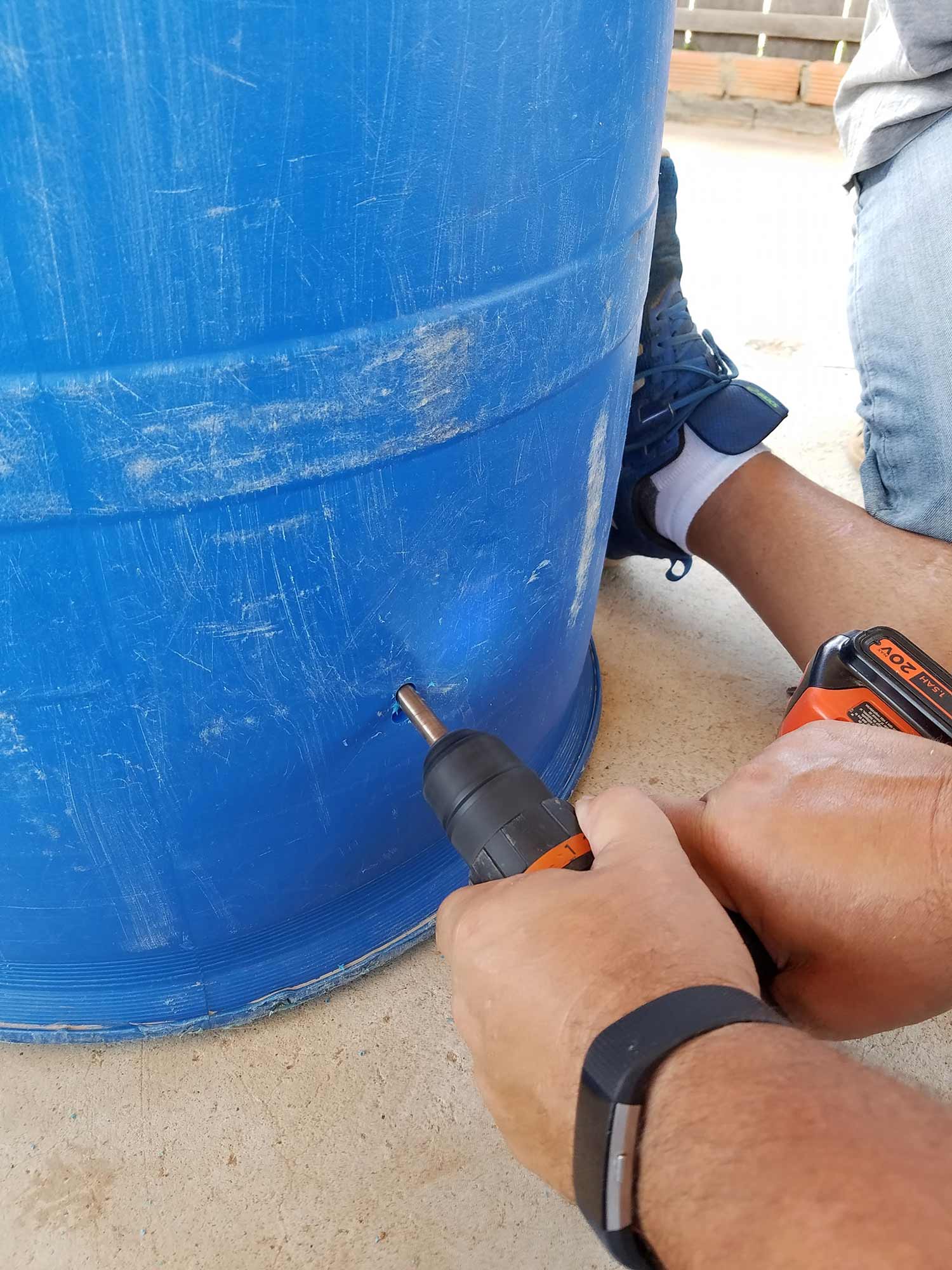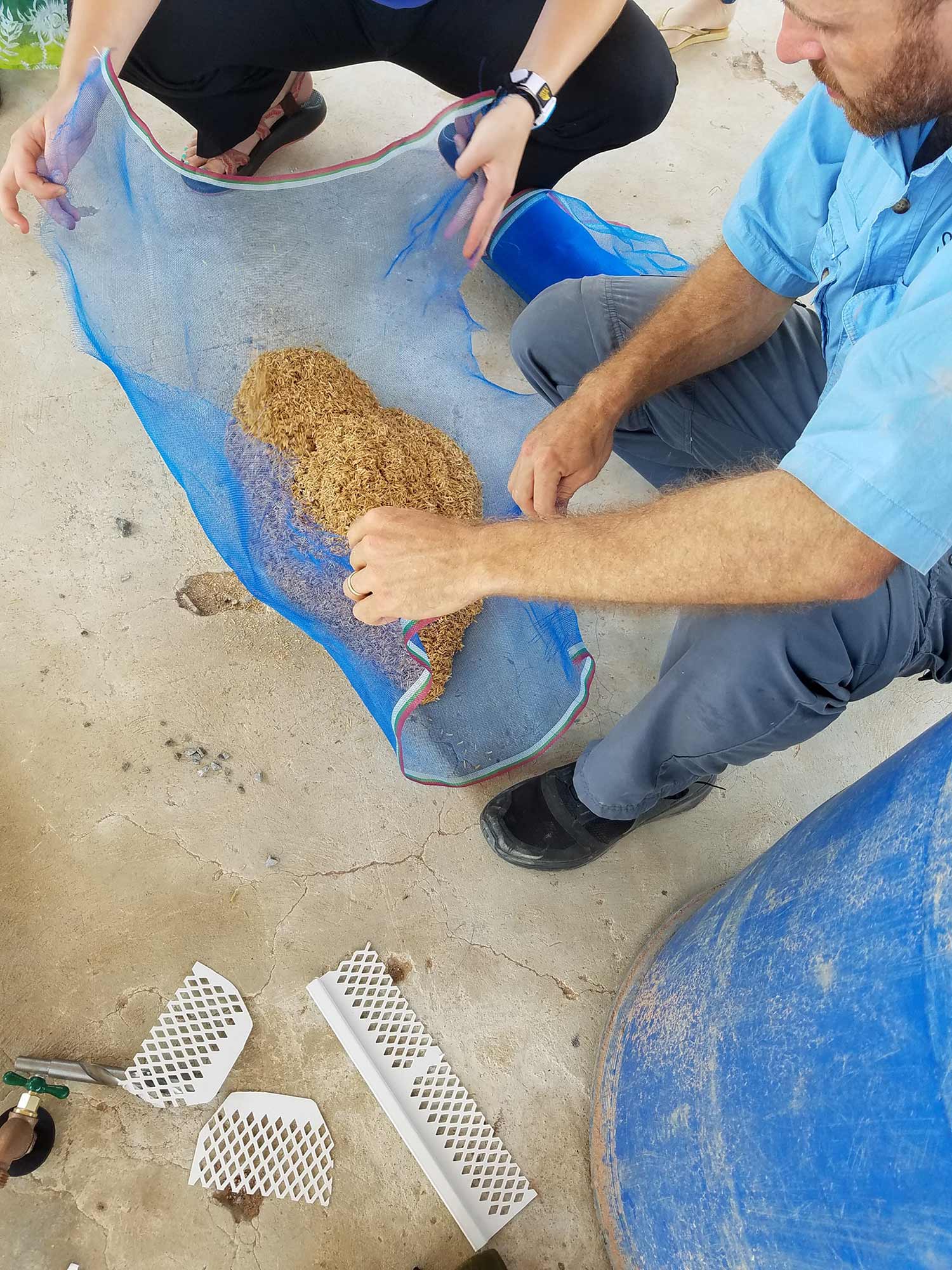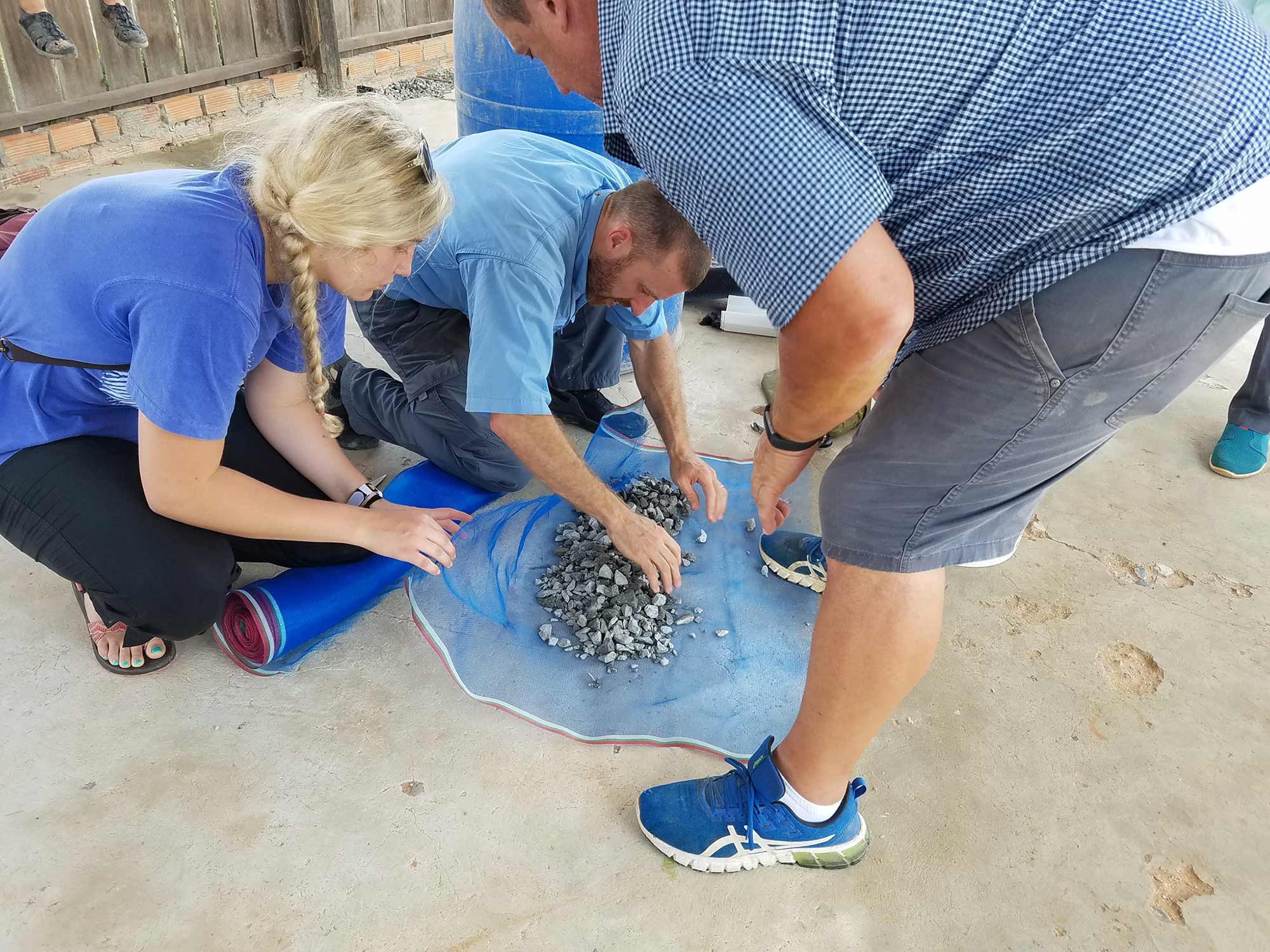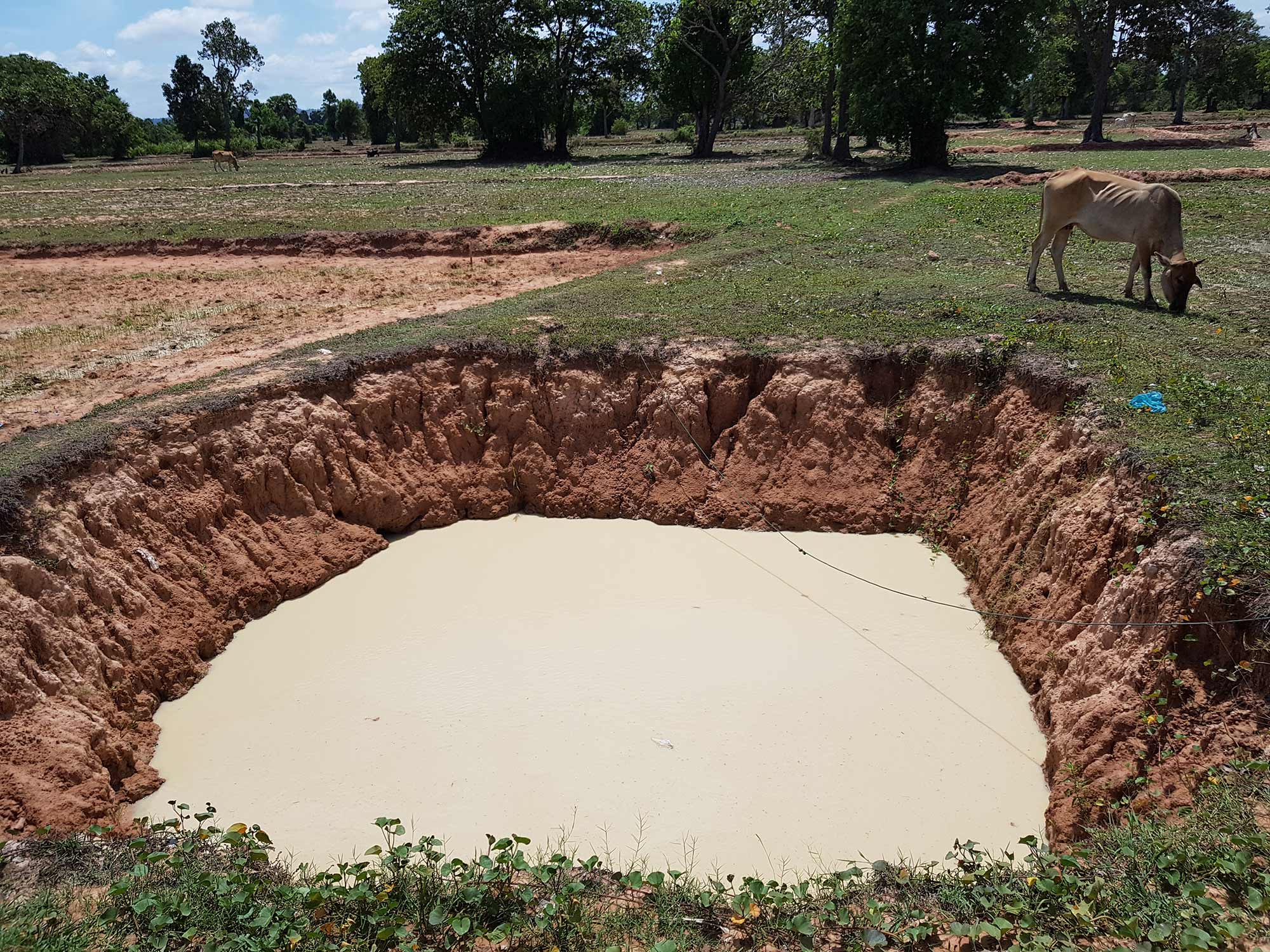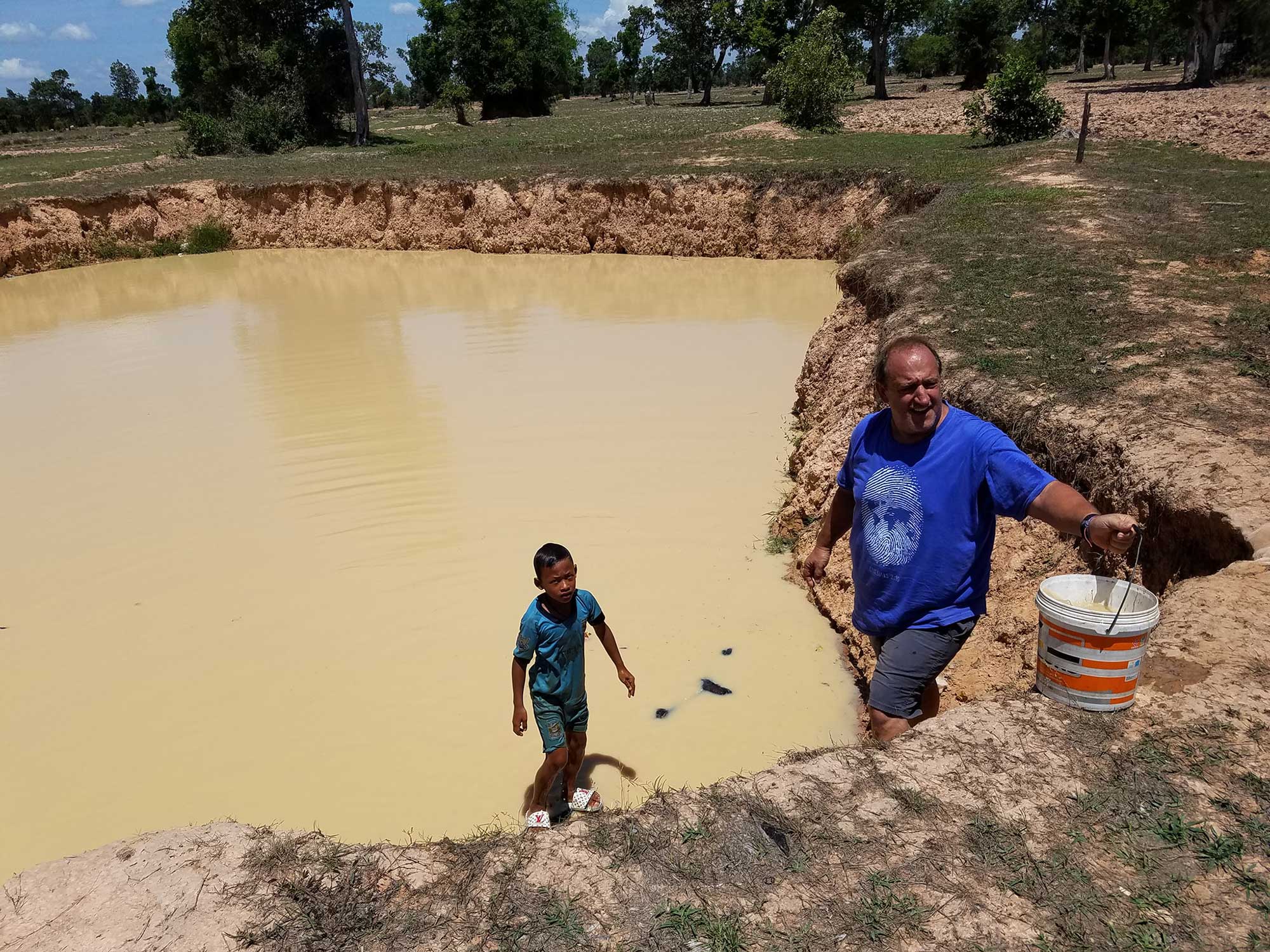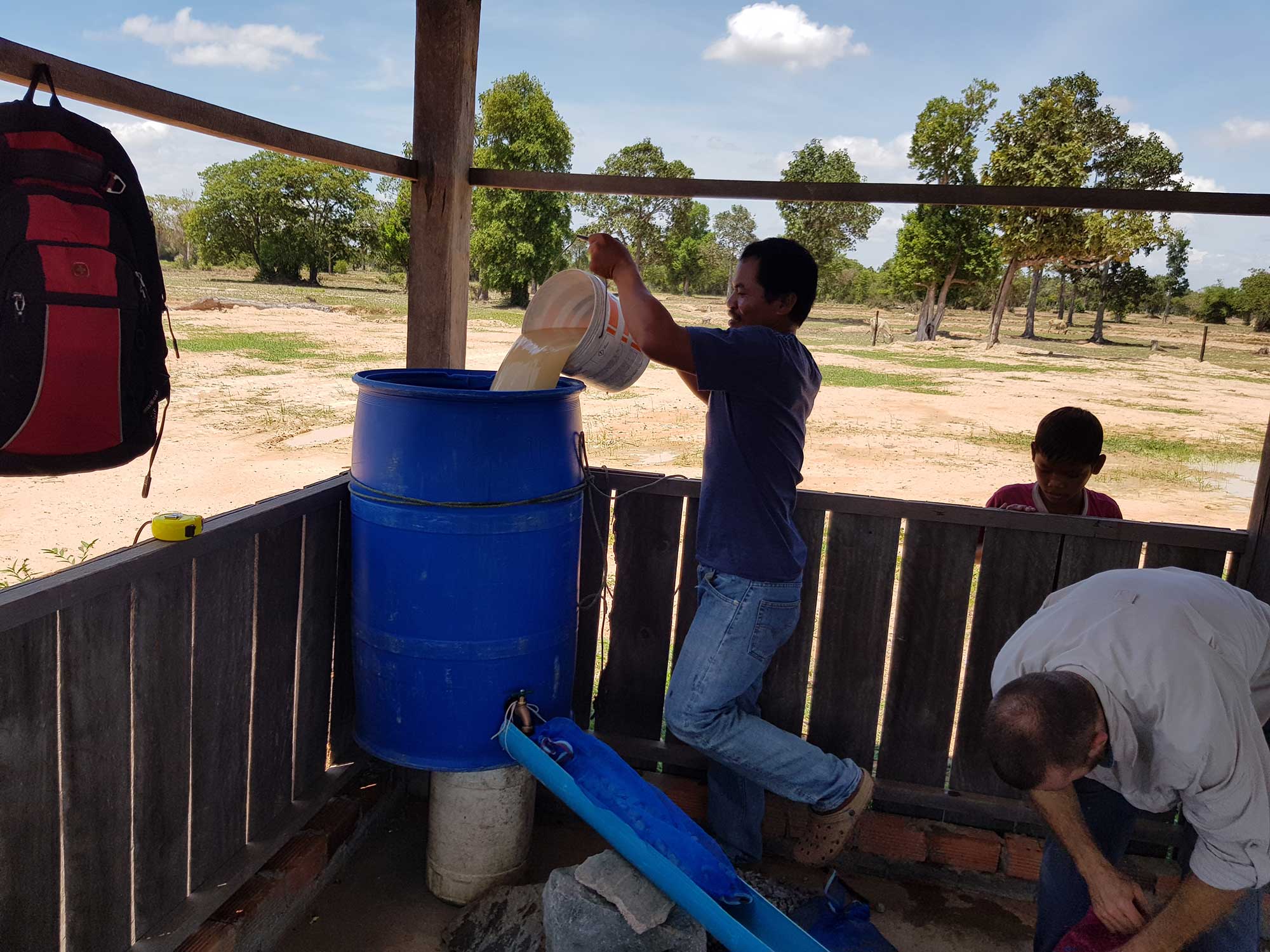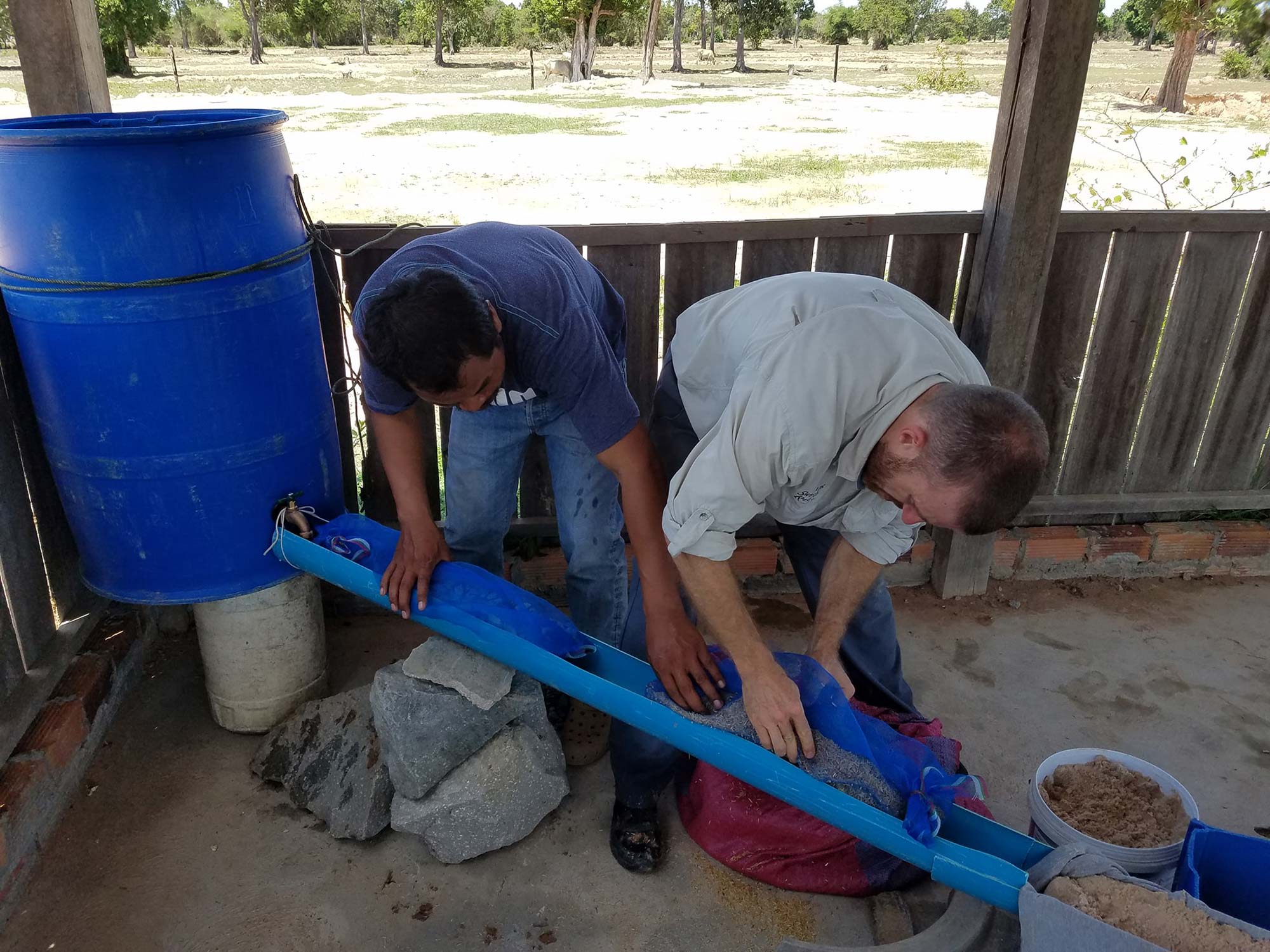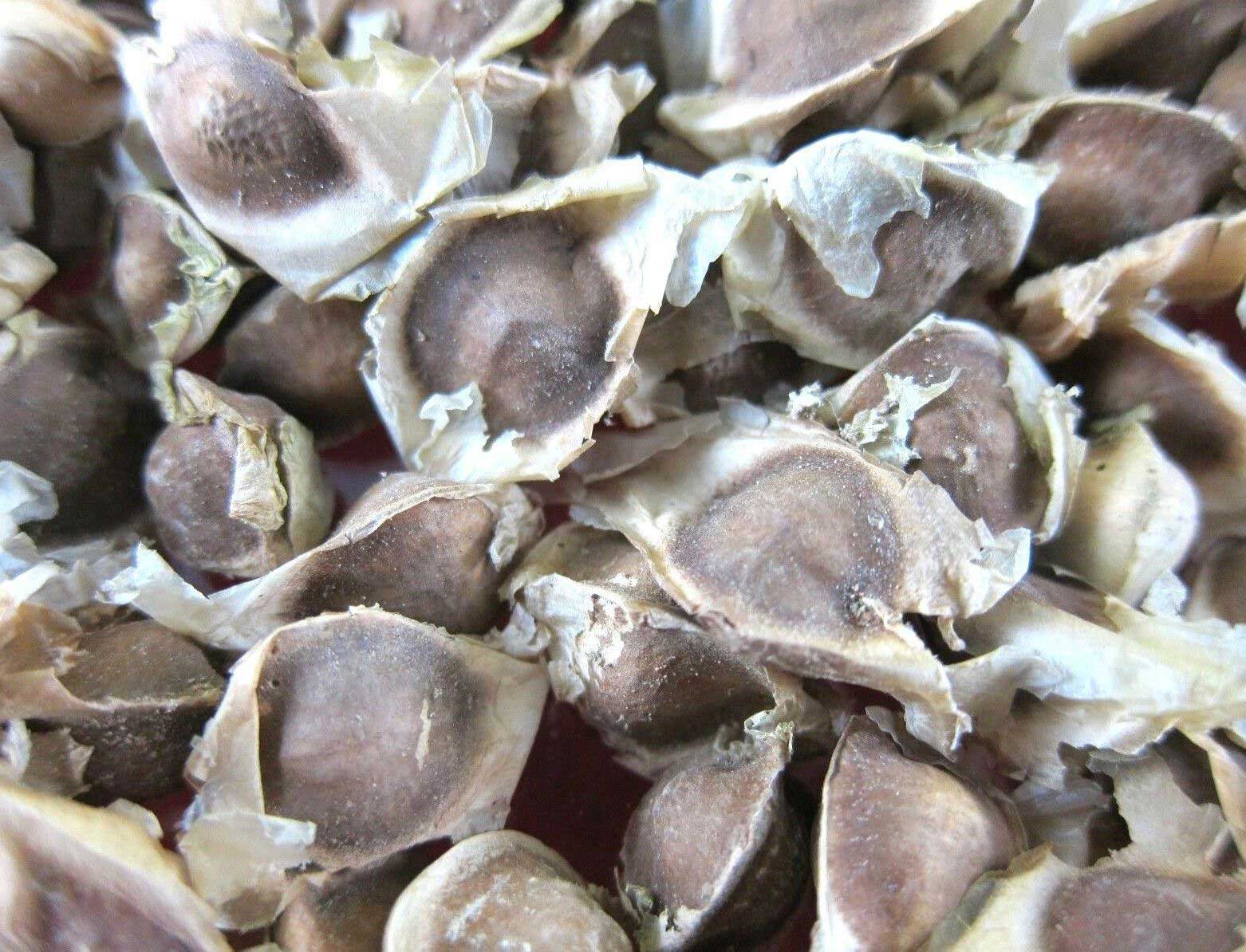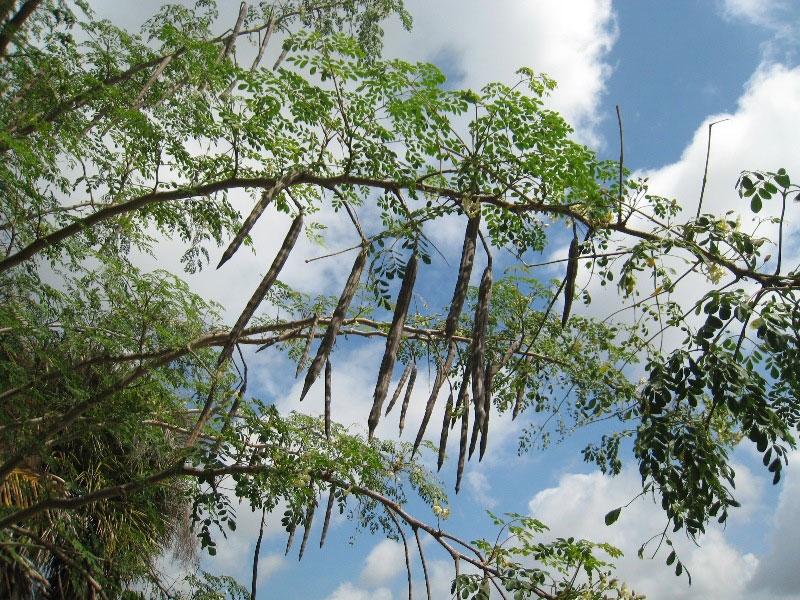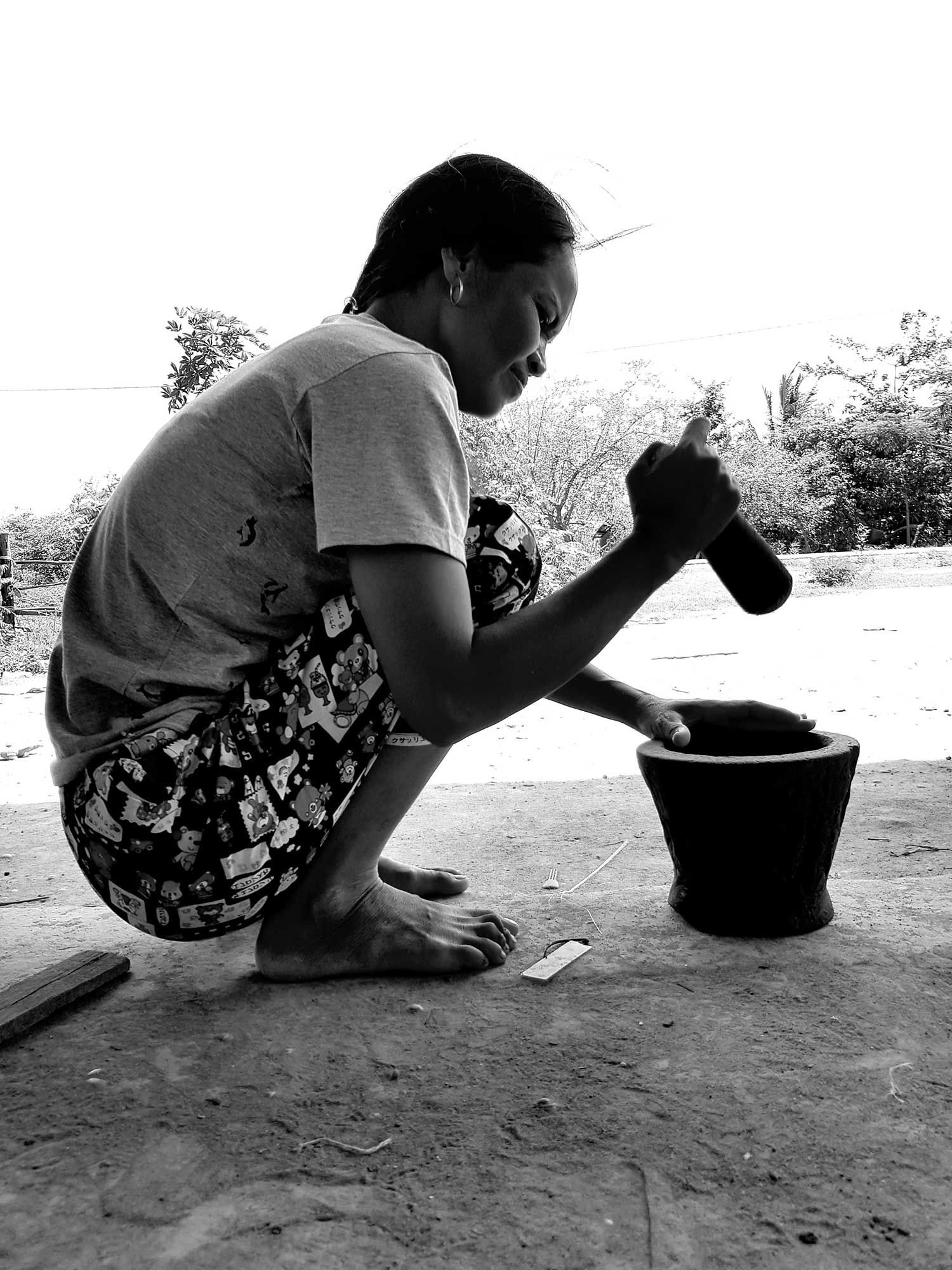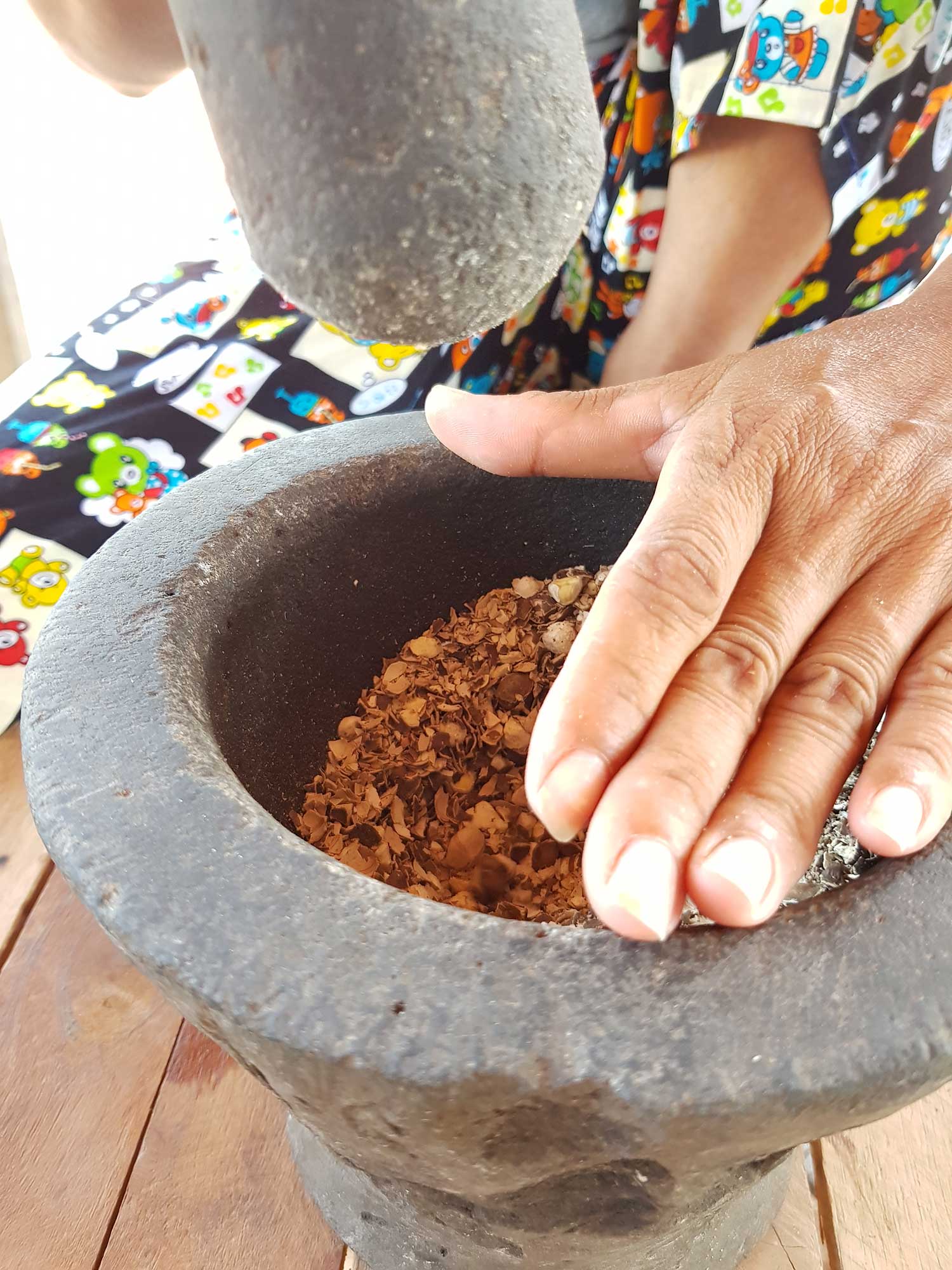Moringa: A Story of God’s Provision
Project Stage



This Water is Really Cloudy
In early 2019, a Texas-based nonprofit children’s outreach and their partner, Cambodia Village Outreach, offered Sweetwater the opportunity to come alongside their team to develop clean water strategies in Brasat Trav Village, Cambodia, a town that is a 2-hour drive northwest of Siem Reap. For simplicity, the Texas group and CVO are referred to as the “Team”.
During the past year, the Team has delivered hundreds of household ceramic filters designed to remove microbial pathogens. Built to last several years, the filters have been clogging within months because of the high turbidity (cloudiness) of water being poured into them that is drawn from open pit cisterns. Sweetwater exists, in part, to improve the effectiveness of existing water missions. By extending the life of ceramic filters in Cambodia using local resources to prefilter cloudy water, Sweetwater can fulfill this facet of its mission by extending the resource investment that went into the ceramic filters, elevate the Team’s gospel work among their constituents by improving the success rate of their ceramic filters, and also provide appropriate, sustainable filtering technology that could be used by villagers as a backup in the event that filters fail and are not immediately replaced. This project represented a good match between Sweetwater and the Team.
In the weeks leading up to our June (2019) visit to Cambodia, I tested some prototype prefilters that were designed to reduce turbidity using materials that mimicked what occurs naturally in rural northern Cambodia and/or are easily accessible for the average rural family (See Sweetwater’s YouTube channel for videos of these early tests). During our first day in Brasat Trav Village, we set up a prefilter similar to the one I had designed in the U.S. Since large-diameter bamboo was scarce in Brasat Trav, we went to a nearby town to search for a settling barrel and PVC pipe that could be cut to size.
Along the way, we found filter materials like gravel, sand, and rice hulls, which we purchased off a rice miller.
The first prefilter was constructed in the pavilion where children come for education and games with the Team. The pavilion is situated about 50 m west of a square water-filled pit, approximately 15 x 15 m, and about 4 m deep. Kids swim in this “tank” (as we call such dugout bodies of water in Texas), cattle drink from this tank, and it receives the feces of whatever – or whoever—chooses to defecate in or around it.
It was from this tank that we drew several buckets of water to run through our prefilter.
Keeping with the design I developed in the U.S., we let the water settle in a barrel for 30 minutes before gently draining it through a spigot drilled about 15 cm from the bottom of the barrel—the height we figured was necessary to get above the larger settled particles. The settled water coursed through two meters of 14-cm PVC pipe, cut lengthwise, that was tilted at a 15% slope and filled with segments of gravel, rice hulls, and sand.
It didn’t take long to realize that the filter, as originally designed, wasn’t going to get the job done. We could hardly see one centimeter through the beige-colored water that had passed through the rock, sand, and rice hulls. Using the Secchi Tube I constructed (see video here), I measured the Nephelometric Turbidity Units (NTU) of the pit water before and after the prefilter. The raw pit water was in excess of 400 NTU. We needed it down to 25 NTU. The prefilter only got it down to approximately 350 NTU.
Palm Fruit and the Woman at the Well
During a walk through the Brasat Trav countryside the following day, we passed a palm tree that had dropped ripe fruit along our trail. I immediately noted the dense long fibers that covered the pits of the split fruits on the ground. During our next work day, I asked if there was anyone in town who could gather several fruits for us so I could try filtering the clay particles through the very sticky fibers of the palm fruit pulp. A widow to whom we had been ministering happily obliged and we set about cutting away the tough fibers.
We stuffed the uncleaned fibers—sugary pulp and all—into a 30-cm long bamboo tube and poured pit water into it. The water didn’t move. The pulp was so dense it held the water in place. We then took the palm pits to the widow’s home to wash them in her well water in order to clean the pulp away from the fibers.
The cleaned fibers proved more successful than other filter materials we had tried, but the finest clay particles still left the water extremely cloudy (> 300 NTU).
During the dry season, which is comparable to west Texas in August but lasts for 5-6 months, dirt is pulverized into finely-sifted flour by people, animals, and machines. Such small particles simply do not settle fast enough in the settling barrel and are not large enough to be caught in the fibers of palm fruit or the interstitial spaces of sand dams.
Sweetwater’s team of prayer warriors had been praying for months that we would successfully design a natural, sustainable, method for prefiltering pit water to make it suitable for the Team’s ceramic microbe filters. I therefore had reason to be confident God would deliver us a solution suitable for the average Cambodian villager. I had also come prepared with an idea derived from my experience as an intern at the Education Concerns for Hunger Organization and from recent dives into peer-reviewed scientific literature: using the crushed seeds of Moringa oleifera as a coagulant.
Moringa, the Miracle Tree
Moringa has been used successfully around the world to clarify and disinfect water for generations.
Controlled lab experiments on moringa’s water-healing properties have picked up in the last 20 years. Moringa seed extract acts as a coagulant, binding small suspended particles into larger bundles that settle to the bottom of a container more quickly due to their greater density. Moringa extract also disables many types of bacteria, removing over 99% of bacteria in some studies, including E. coli.
Although I had confidence that crushed moringa seed could be an effective answer to our conundrum of removing the finest suspended sediment from our pit water, I was unsure whether simply crushing seeds in the shell and soaking the powder for 30 minutes would produce an effective extract. All the studies I had read controlled for many variables, and most included more steps of seed preparation than we had time to try.
In God’s providence, during my first hours in Cambodia, I came across some bags of moringa seeds in the health food section of an upscale grocery store in Siem Reap. Despite the cost ($11 for 100 grams), I wasn’t sure whether I’d find the seeds I needed in Brasat Trav so I purchased two bags of the stuff. Good thing too. Although moringa grows well in Cambodia, there weren’t many trees with seed pods along the main road in Brasat Trav. We brought the seeds to a woman in Brasat Trav who has been both a recipient of the Team’s help as well as a partner through use of her home as a staging area for medical clinics. She quickly reduced the seeds to powder in her mortar and pestle.
I added the powder to a bottle of drinking water, shook it for 20 minutes, and let it sit for an hour. Following this soaking, I strained out the seed mash through my shirt with the help of my son and some local children who poured the moringa mixture through the edge of my shirt. Eleven dollars worth of moringa and some sweat yielded us a bottle of moringa seed extract.
It was the end of my last day in Brasat Trav when the moringa extract was ready for use, so I had to content myself with taking the extract back to the hotel in Siem Reap to run the test. In the hotel bathroom I mixed five parts pit water to one part moringa extract, shook it for 15 seconds, and let it sit. Thirty minutes later a shout of praise to God for his provision could be heard in our room when I walked in to see a 2-cm layer of yellow brown sediment buried under 10 cm of clarified water.
Laboratory Trials
With our time in Cambodia at an end, refining the method of a palm fruit fiber and moringa prefilter was conducted in our office in Stephenville, TX. To apply our research effectively for the Brasat Trav village, we sought to answer: 1) what is the smallest ratio of moringa extract to pit water that can effectively coagulate and settle the suspended particles? and 2) Can we improve on the amount of time required to clean 10 liters of water?
Sweetwater Illustrated
I have often been asked “What, exactly, do you do if you don’t drill wells?” This story from our first visit to Cambodia provides a substantive answer. We instructed our Prayer Board to pray that God would provide solutions that were accessible, sustainable, and executed in a manner that availed opportunities to minister the Gospel in word and deed to widows, orphans, and the materially poor. We did our homework prior to our visit to Cambodia, researching the geography, geology, hydrology, and plant ecology of the Siem Reap region. We designed experiments to test prefilter technologies that could be easily transferred to Cambodia. On the ground, we experimented with our technique, found it needed adjustment, and began praying for eyes to see what adjustments could be made within the limited time we had left in country. Specifically, we prayed that God would give us a solution using plants local to Brasat Trav from which products could be easily derived for use in filtering water. In the course of trying out local natural products, such as palm fruit and moringa, we made relationships with widows, orphans, and the materially poor and were able to pay them for their help and bring them into the process of generating clean water for their community. The citizens of Brasat Trav were team members and key partners in the work, not simply recipients of goodwill.
We looked to God for knowledge from beginning to end. When our backs were against the wall because of limited time, God provided with accessible, renewable, natural resources, and opened doors for relationships to be built and the Gospel to be preached.
How you can help:
Consider a one-time or ongoing donation to cover more projects like these.
